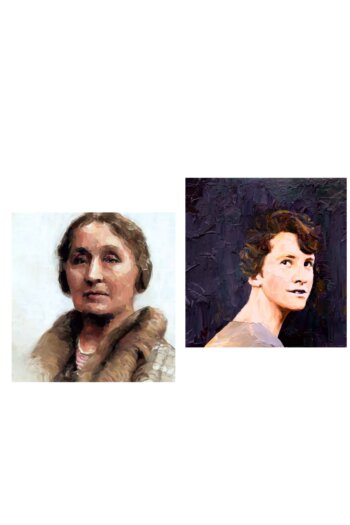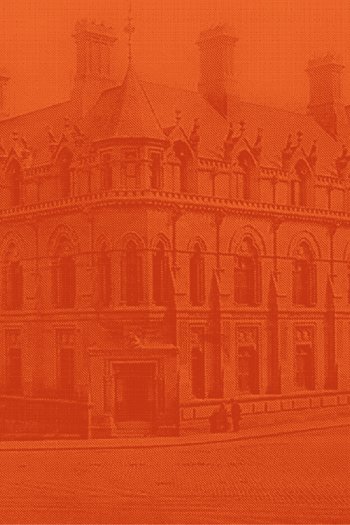Katharine Parsons, born in Yorkshire in 1859, met her husband, Sir Charles Parsons, in Leeds in 1882, and they married the following year. Charles, an engineer, invented the compound steam turbine in 1884—a groundbreaking invention in the generation of electricity. Katharine worked closely with him on this project and throughout their marriage, continuing to collaborate on various engineering ventures. In addition to being a mother to Algernon George Parsons and Rachel Mary Parsons, Katharine was an accomplished engineer in her own right.
Katharine’s influence peaked during the First World War when she managed the female workforce in newly converted armaments factories on Tyneside. As women took on traditionally male jobs, Katharine’s expertise became invaluable, and in 1919, she became the first person to be awarded the title of Honorary Fellow of the North East Coast Institution of Engineers and Shipbuilders.
An outspoken feminist, Katharine expressed her frustration at women being forced out of engineering roles after the war to make way for returning soldiers. In a notable speech on 9 July 1919, she criticised this inequality, stating that women had been permitted to create the “implements of war and destruction” but were barred from “fashioning the munitions of peace”. Her activism contributed to shifting perceptions of women in the workplace and beyond.
In June 1919, Katharine co-founded the Women’s Engineering Society (WES) alongside her daughter Rachel Parsons, Margaret Rowbotham, Lady Margaret Moir, Eleanor Shelley-Rolls, Janetta Mary Ornsby, and Laura Annie Willson. The society aimed to help women secure jobs, training, and acceptance in the engineering industry. Katharine’s generous financial contributions helped sustain the society, which continues to thrive today. Rachel served as WES President before Katharine took on the role from 1922 to 1925. Despite leaving the society in 1925 following a disagreement, Katharine’s impact remained undeniable.
Later in life, Katharine became a magistrate in 1921, was admitted to the Freedom of the City of London, and earned the Freedom of the Worshipful Company of Shipwrights. After her husband’s death in 1931, she was a key source of information for his biography before passing away in 1933.
Rachel Parsons, born in 1885 and raised in the North-East, followed in her mother’s footsteps, making significant strides in engineering and beyond. In 1910, she became the first woman to study engineering at Newnham College, Cambridge University, although she was not permitted to graduate with a degree.
During the First World War, Rachel took on her brother’s role as a director at C.A. Parsons & Company, their family’s business in Newcastle, and used her influence to encourage women to join the workforce during wartime. She also became a leading member of the National Council of Women, advocating for equal access to technical education for women.
After her brother’s death in 1918, Rachel left her position as director but remained deeply involved in WES, serving as its first President from 1919 to 1921. In 1920, she co-founded Atalanta Ltd., a company employing only women to produce machine models and surface plates—a revolutionary idea at the time.
Rachel later ventured into politics, representing the Municipal Reform Party in Finsbury and running for Parliament in 1922. Although she was not elected, she continued to campaign for women’s rights, including equal pay and employment opportunities, running again as a Conservative candidate in Newcastle in 1940. Like her mother, Rachel was a tireless advocate for women’s rights.
Tragically, Rachel’s life ended in 1956 when her death was ruled a murder. In her later years, she devoted herself to horse racing, a personal passion.
Katharine and Rachel Parsons were trailblazers, not only in engineering but also in their wider efforts to promote women’s rights across Britain. Their pioneering work with WES and their advocacy for women in STEM fields have left a lasting legacy. It is fitting that they are honoured with a blue plaque at their family home in Jesmond, celebrating their contribution to the city and the nation. Their story aligns perfectly with the mission of The Common Room: to inspire young people to engage with STEM subjects, ensuring their legacy continues to influence future generations.
-Ruby
Work experience student, The Common Room

